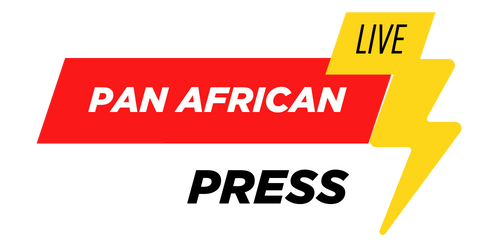
Start your business
Build your brand
Create your website
Online store editor
Customize your store
Store themes
Find business apps
Shopify app store
Own your site domain
Domains & hosting
Explore free business tools
Tools to run your business
Sell your products
Sell online or in person
Sell online
Grow your business online
Sell across channels
Reach millions of shoppers and boost sales
Sell in person
Point of Sale (POS)
Sell globally
International sales
Sell wholesale & direct
Business-to-business (B2B)
Market your business
Reach & retain customers
Market across social
Social media integrations
Chat with customers
Shopify Inbox
Nurture customers
Shopify Email
Know your audience
Gain customer insights
Manage your business
Track sales, orders & analytics
Measure your performance
Analytics and Reporting
Manage your stock & orders
Inventory & order management
Automate your business
Shopify Flow
Shopify Developers
Build with Shopify's powerful APIs
Plus
A commerce solution for growing digital brands
All Products
Explore all Shopify products & features
Help and support
Get 24/7 support
How-to guides
Read in-depth business guides
Business courses
Learn from proven experts
Shopify blog
Business strategy tips
What is Shopify?
How our commerce platform works
Founder stories
Learn from successful merchants
Branding
Build your brand from scratch
Marketing
Build a marketing plan
Ecommerce SEO
Improve your search ranking
Social media strategy
Turn social into sales
Business growth
Scale your business
Business name generator
Logo maker
Stock photography
Business plan template
Link in bio tool
QR code generator
Changelog
Your source for recent updates
Newsroom
All company news and press releases
Start selling with Shopify today
Start your free trial with Shopify today—then use these resources to guide you through every step of the process.
Owned media refers to any content you publish using marketing channels you control, such as your website, social media accounts, or marketing emails.
Start your online business today.
For free.
Before the digital marketing age, launching a full-scale owned media strategy was expensive. If you wanted to publish and distribute your own content, you had to pay for materials, printing, and shipping costs. Some retailers even charged a fee to offset expenses. For example, the 1896 Sears, Roebuck & Company catalog cost recipients 25¢, which would be roughly $9 in 2023.
Thanks to online publication options, creating and distributing owned content is much more affordable today. Businesses of all sizes use owned media to increase brand awareness, build relationships with current and potential customers, and boost sales.
Owned media refers to any content your company publishes using a marketing channel you control, such as your website or another web property, social media accounts, or marketing emails. These channels are sometimes referred to as owned media channels or owned media properties.
Implementing an owned media strategy can help businesses raise brand recognition, increase traffic to their online stores, generate leads, and build relationships with potential customers.
Businesses use owned media channels to publish both promotional and non-promotional content. Promotional content directly advertises or promotes your products, services, or company. Non-promotional content provides value to your target audiences but doesn’t explicitly promote your brand.
Publishing engaging content on your own channels can also increase the effectiveness of your overall content marketing efforts: Owned content can provide immediate value to people who find you through other means (such as a paid ad click or a word-of-mouth referral), increasing the likelihood that they’ll take other desirable actions like follow your social media profiles, sign up for an email campaign, or make a purchase.
Owned media is typically grouped by channel. Here’s a list of common types:
Your website or online store is an owned media property, so anything you publish there is technically a type of owned media. Marketing and product page content is particularly valuable for ecommerce businesses, which use these pages to describe the unique benefits of their products or services and encourage potential customers to make a purchase.
Businesses use blogs to publish entertaining, educational, informational, and promotional content. For example, if you sell wrinkle-resistant khakis, you might announce a new product line and describe its features in a blog post on your company website. You may also publish a series of job search and interview tips, topics that are adjacent to wearing khakis.
Because most blogs display recently published content at the top of the blog’s homepage, they’re also a popular outlet for timely or seasonal materials, such as content about current events or a guide to holiday gifting.
Resource centers typically contain content marketing materials—i.e., they provide value to a particular target audience but don’t explicitly promote your products. For example, if you sell fruit trees and vegetable seeds, you might create a gardening resource center and publish articles like “The best time to plant an outdoor vegetable garden” and “What to do with green tomatoes.” You might even host tree-pruning and canning webinars.
Social media content is sometimes referred to as shared media. Because you don’t technically own the social media platform, this social content isn’t owned media in the truest sense of the word.
Despite this, posting content to social media channels follows a process similar to that of posting owned media on your own website. As long as you don’t violate the social channel’s rules and regulations, you have complete control over what and when you post.
Companies use social channels to both promote products directly and share content that’s meant to educate or entertain. You can also use social media posts to drive traffic to your other owned media channels. For example, a video that shows a customer taking a pair of rollerblades purchased from your company out for a spin might contain a link to the relevant product page on your online store.
Email marketing allows businesses to send messages directly to current or potential customers. Like social media, email content can include product marketing, promotions, and informational or entertaining content. For example, you might announce a sale or a product drop or send a newsletter with customer stories or styling advice. Like social media posts, marketing emails can also include links that drive traffic to your other owned media channels.
Mobile apps you create for your company are also owned media channels. Exact content types depend on the app’s purpose, but common formats include help center content, mobile product pages, and a mobile shopping cart.
Direct mail content is an example of traditional owned media. Just as in email marketing, businesses “own” an address list, but instead of emails, direct mail campaigns involve sending physical newsletters or promotional materials like flyers, catalogs, or postcards directly to target customers.
Owned media campaigns start with a strategy. Before you create content, understand why you’re creating it, who you’re targeting, and where you plan to publish.
Here are the three main elements of an owned media strategy:
Set measurable goals that support your overall business goals for your owned media efforts. For example, if you want to increase sales by 5% in the upcoming calendar year, you might set the goal of capturing 50 new leads per quarter and increasing organic traffic to your site by 15% over the same period.
An effective owned media strategy provides value to your target audiences. Before doing this, you need to know who your customers are and why they need your product.
Start by reviewing your business’s existing target audience data, including age, gender, geographic location, income, and level of education. Depending on how detailed you want to get, you may also research their interests, needs, buying cycles, and decision drivers. If you don’t have this information yet, you can send customer satisfaction surveys to your existing customers or create buyer personas—fictionalized representations of your ideal types of customers.
You can also use target market research to fill in gaps in your audience research and help you understand your value to potential customers. Target market research focuses on identifying the characteristics and needs of your ideal customers, while audience research is a broader term for the analysis of a wider range of individuals or groups who interact with your company. To understand the market conditions around your product or service, conduct interviews or focus groups. You can also read industry publications, government reports, academic research, or competitor materials.
For example, if you sell shoes designed to relieve the symptoms of bunions, you might review an NIH study to determine the prevalence of bunions in different demographics, review competitor materials that highlight the adverse health effects of living with bunions, and read up on patient concerns in the Lower Extremity Review.
Once you’ve identified the need for your product and gathered information about your target audiences, develop your content strategy:
These five best practices can help you implement a successful owned media strategy:
Search engine optimization (SEO) refers to several tactics that can improve the performance of web content in search engine rankings and increase website traffic volume.
One way to leverage SEO in your owned media strategy is to plan content around specific keywords, i.e., words or phrases that might appear in a target customer’s search query. You can use a free keyword research tool (like Moz Keyword Explorer or Keyword Surfer Extension) to research keyword volumes and how difficult it is to rank for them.
Once you’ve identified your target keywords, create SEO-optimized content by incorporating them into blog posts on your website. You can also use header descriptions, meta tags, alt tags, and search-engine-friendly layouts to format SEO content for success.
Creating quality content can be time- and resource-intensive. To standardize your content creation process, document it and use it consistently. This can help increase efficiency, minimize errors, and make it easier to outsource or delegate specific tasks to freelancers or members of your team.
Here’s a sample 10 step process to get you started:
Owned media cross-promotion is the process of using owned channels to promote content hosted on other owned channels. Cross-promotion can increase the number of people who see a particular piece of content and leverage a particularly strong following on one channel to boost impressions on another.
For example, you might direct traffic from social channels to your blog by posting a teaser and encouraging social media users to click through. Or, you might include a featured Instagram post in your email newsletter to encourage email subscribers to follow your social media accounts.
Different content formats perform better on different channels, appeal to different users, and are better suited to different types of subject matter. Successful owned media strategies provide multiple options for engaging with owned content.
For example, because visual content earns higher engagement rates on social channels than text-only content, you might accompany a blog post about the environmental benefits of buying second-hand clothing with an infographic that visualizes the same content. You might also experiment with short-form video or audio content and monitor engagements to see what formats resonate most with your particular target audiences.
Publishing guest content can help you increase awareness and build relationships with other brands, industry experts, and creators. It can also help you publish a higher content volume for minimal additional costs.
For example, if your ecommerce company sells herbal liqueurs, you might invite the owner of a local bar to publish a series of guest posts on your blog featuring cocktail recipes and pairing recommendations using your products. You get free, relevant content, access to the bar owner’s audience, and an implied recommendation from an industry expert. In turn, the bar owner gets access to your audiences and the reputational boost of being recognized by your company as a leader in the space.
Owned media content can provide immediate value to customers who find you through other means, increasing the likelihood that they will take a desired action like following your social media profiles, signing up for an email campaign, or making a purchase.
Paid media refers to content distributed using paid placements, including PPC (pay-per-click) ads, sponsored content, and other paid ad types, while earned media refers to unpaid coverage by media outlets, individuals, or other brands. News articles in print or online publications and customer reviews are both earned media examples.
Branded video content on a company’s YouTube channel is one example of owned content.
Earned media coverage can help small businesses increase brand recognition and authority.
Keep up with the latest from Shopify
Get free ecommerce tips, inspiration, and resources delivered directly to your inbox.
By entering your email, you agree to receive marketing emails from Shopify.
popular posts
The point of sale for every sale.
popular posts
2023-11-08
2023-09-01
2023-12-05
2023-11-09
2023-09-20
2023-11-23
2023-12-02
2023-11-06
Subscribe to our blog and get free ecommerce tips, inspiration, and resources delivered directly to your inbox.
Unsubscribe anytime. By entering your email, you agree to receive marketing emails from Shopify.
18 Apr 2024
18 Apr 2024
17 Apr 2024
17 Apr 2024
16 Apr 2024
14 Apr 2024
12 Apr 2024
12 Apr 2024
Learn on the go. Try Shopify for free, and explore all the tools you need to start, run, and grow your business.
Try Shopify for free, no credit card required.






